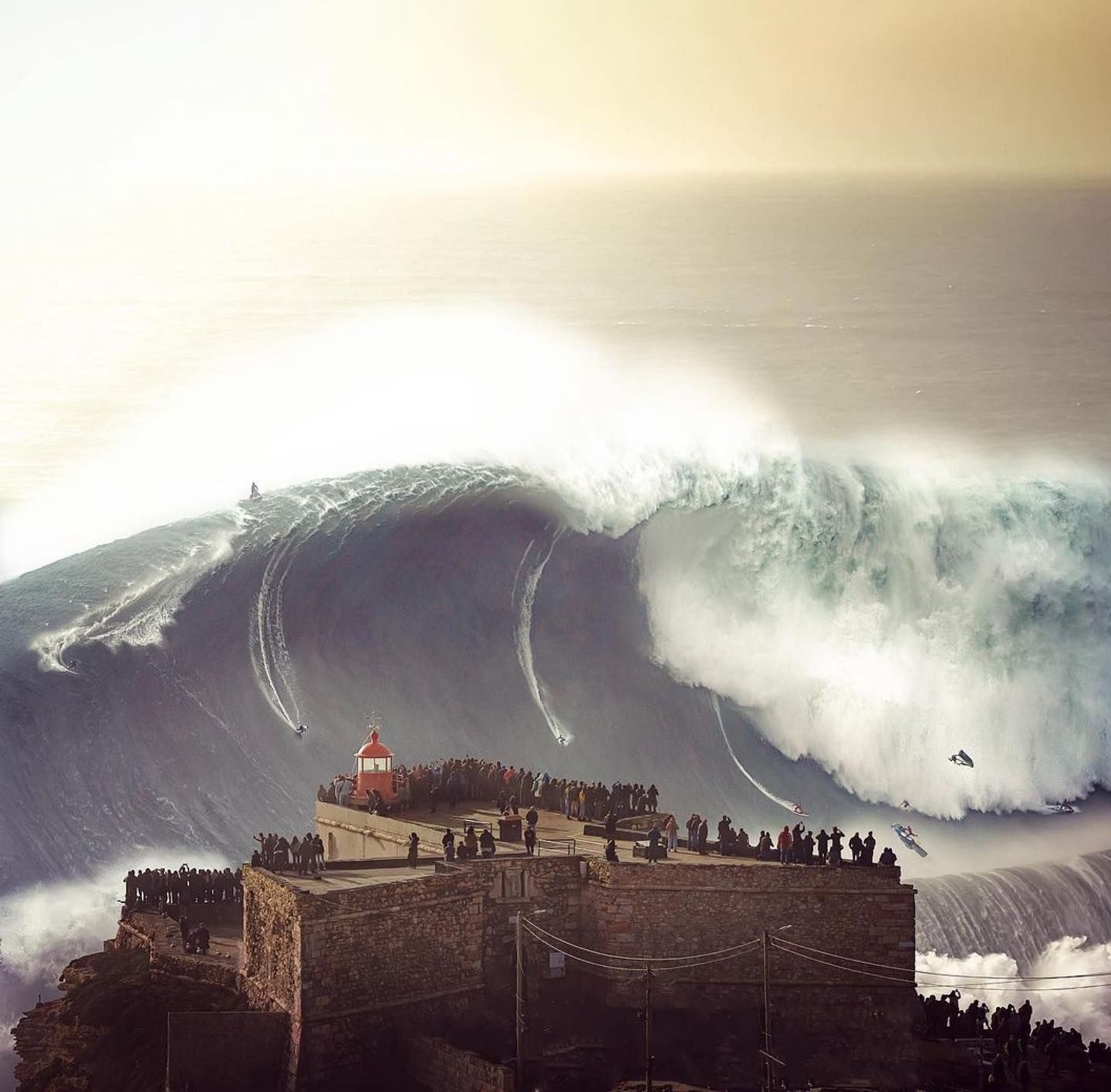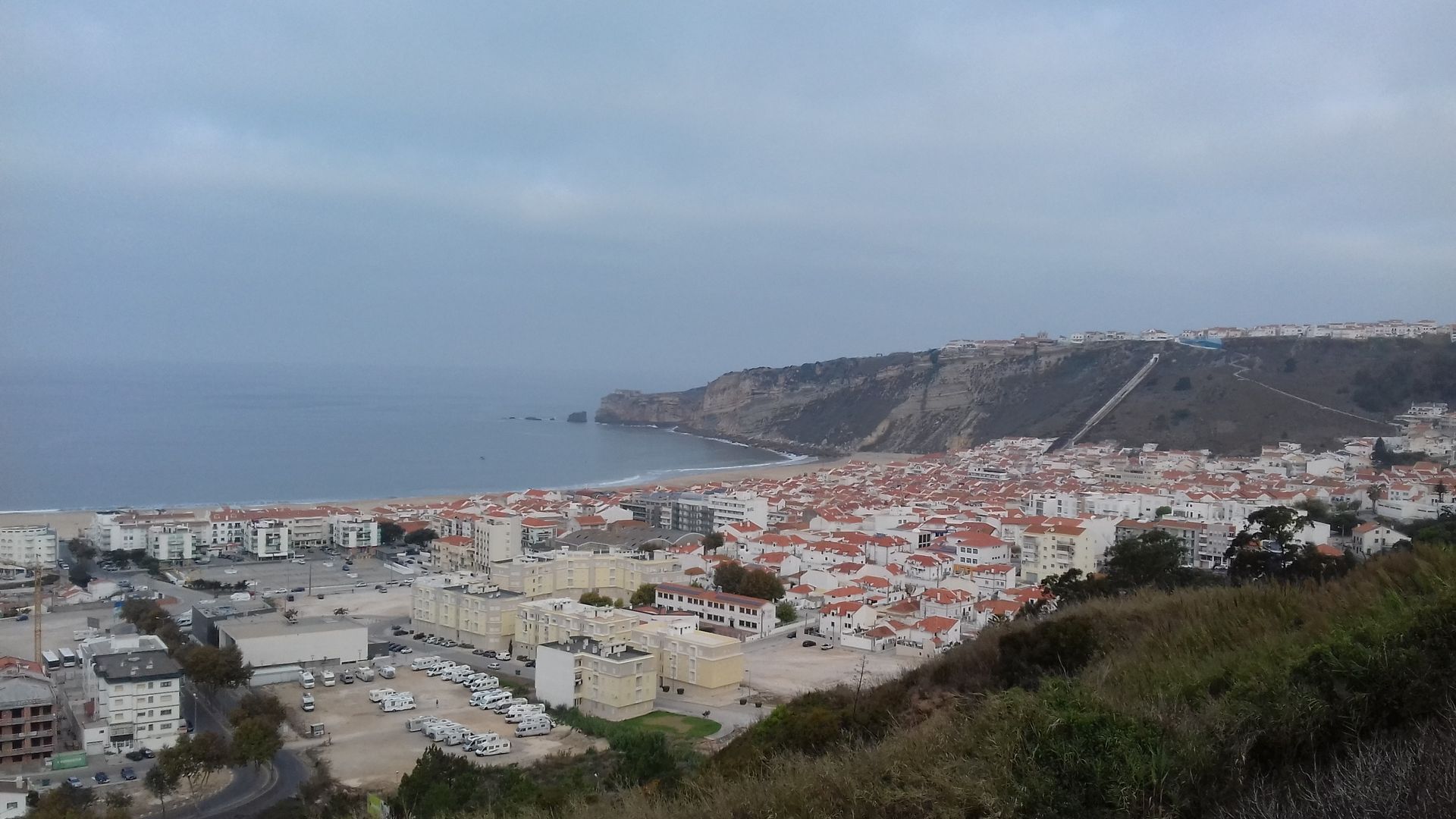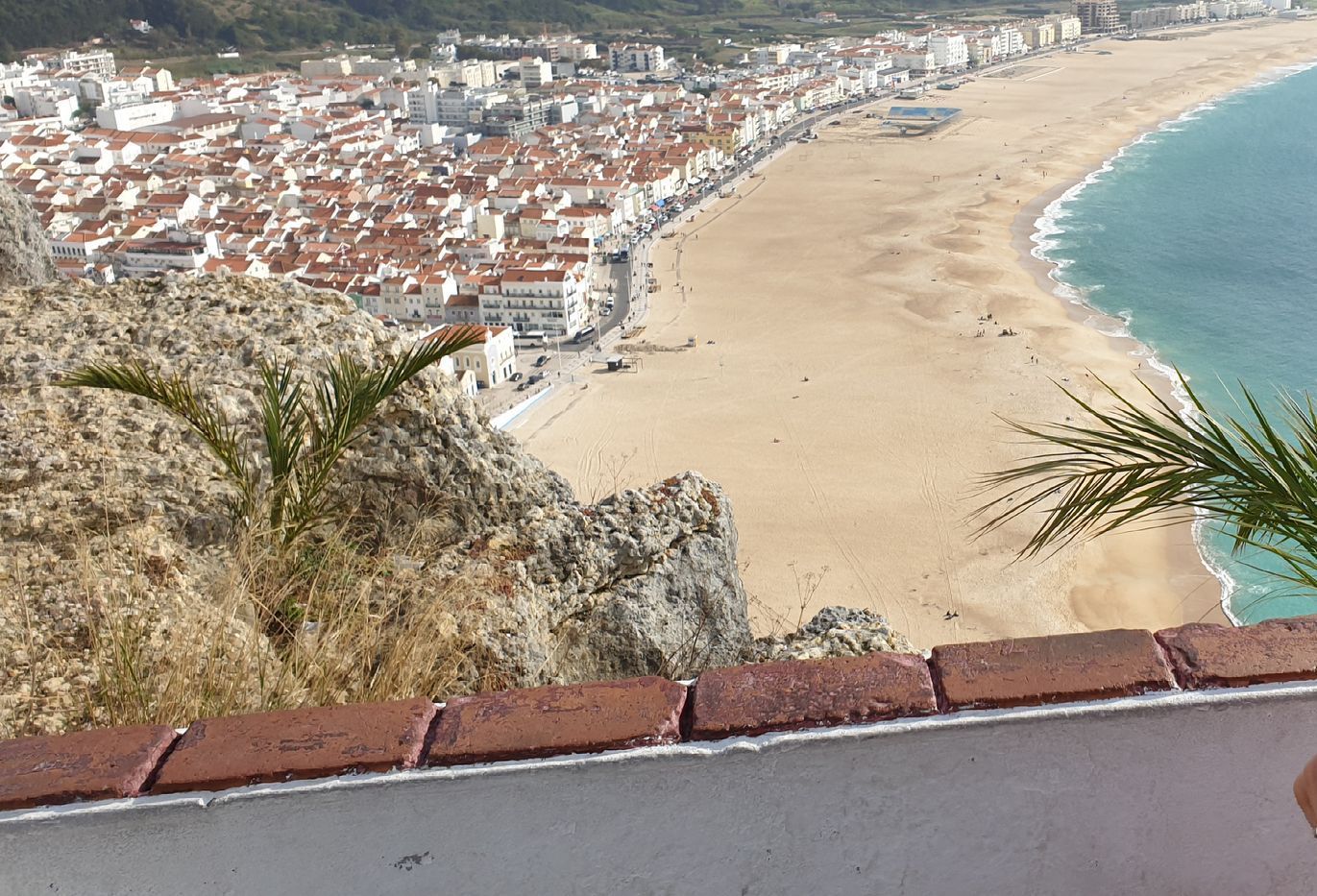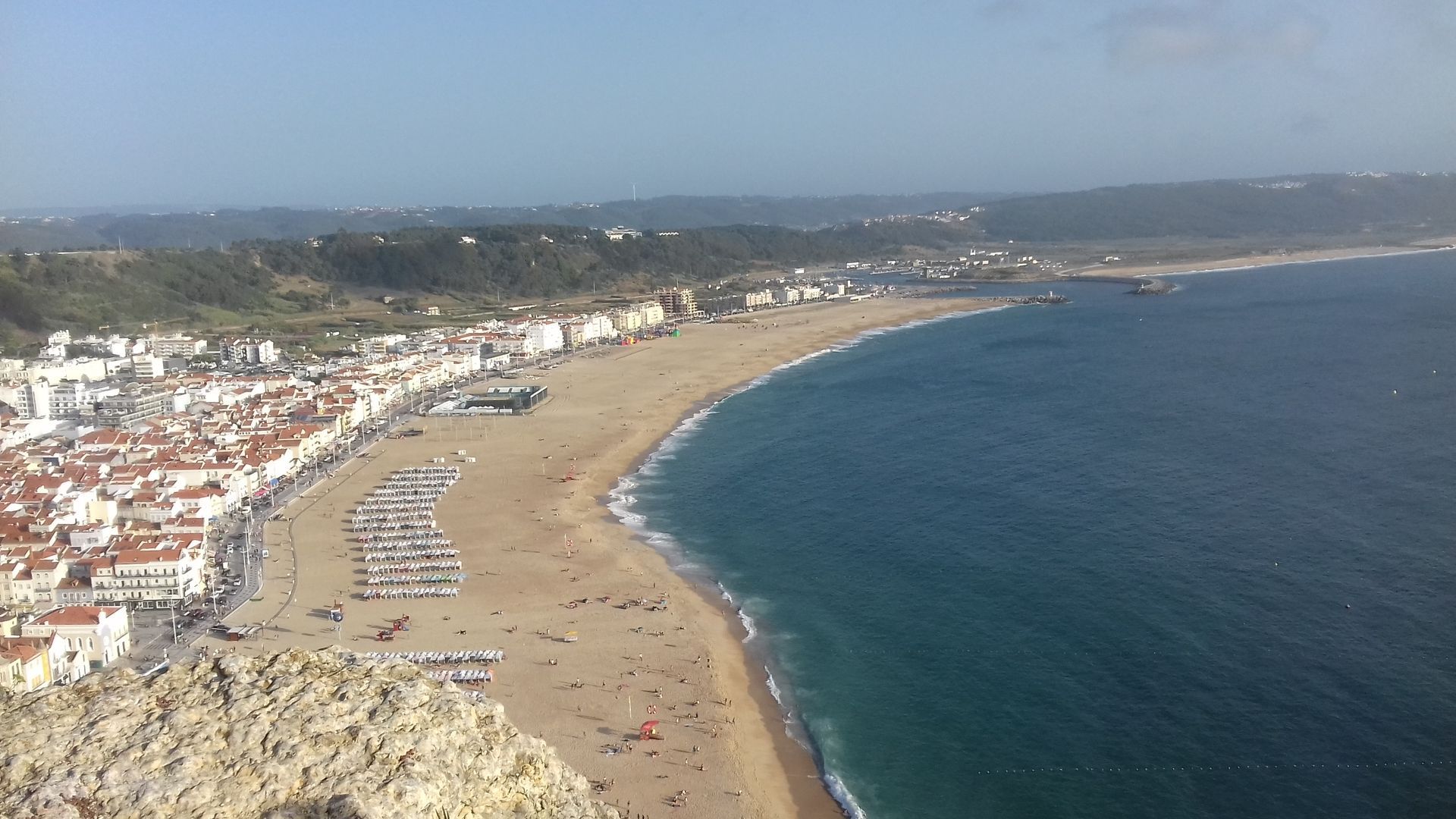FULL DAY TOUR Nazaré - home to the 100 Feet waves
A visit to the Alcobaça Monastery.
Lunch near the 100 feet waves at Nazaré
A visit to Batalha Monastery – Tomb of the Unknown Soldier.
Pick up and drop off included.
All tickets and lunch included.
We adjust the itinerary to any slight mobility issue.
This Tour starts at Lisbon.
Departure from Lisbon
Alcobaça Monastery
The foundation of the Abbey of Santa Maria de Alcobaça and its Charter of Couto date back to April 8, 1153, by order of the first King of Portugal, Afonso Henriques.
The domains of the Cistercian Order are thus consecrated.
The borders of the Kingdom of Portugal, with the conquest of the cities of Santarém and Lisbon, in 1147, advanced south towards the Tagus Line. This fact required rapid and efficient settlement so that Christian expansion could continue southwards.
The protection of the Coutos was handed over to the militia of the Order of the Temple, exempting them, as much as possible, from the military attacks of the Moors.
The central and radiating point of all this dynamic was the abbey itself. Its construction began in 1178, four years later Saint Bernard of Clairvaux was canonized.
The importance of the Alcobaça Monastery evolved into a cultural, religious and ideological crescendo. Its monumentality is all the more evident the more clear and austere its architecture is. It is, moreover, the first attempt at Gothic architecture in Portugal: a model that was left without immediate continuity and was not reproduced until much later, functioning as an almost isolated pole, a white jewel in the landscape.
Nazaré town and viewpoint
Nazaré is certainly one of the most picturesque coastal towns in Portugal. Its tourist success has increased in recent years when giant waves have made it a world-famous surfing destination.
The town of Nazaré is divided into several distinct parts: the town center located by the sea in the lower part, the site, perched on an impressive cliff, and Pederneira, the cradle of the town.
And of course the fort, and the North Beach, which have become the scene of surfers coming to break records.
If the atmosphere is very different between the bottom and the top of Nazaré, the traditions and legends remain present everywhere and are closely linked to the sea.
All that remains is to explain how these giant waves appear. This is a seasonal event, normally occurring between November and May, for which a combination of currents, winds and tides must occur simultaneously.
The sea floor in front of the Forte lighthouse rises steeply in a rocky ramp, which causes the water to accelerate, on the other hand, next to it, at Praia do Norte, the bottom is quite deep and the water is therefore much slower.
With the correct combination of these three factors, the faster water when it reaches the coast climbs over the slower current and causes waves that reach 30 meters. North American surfer Gareth McNamara was the first professional surfer to try to ride these waves, and gradually the international surfing community was attracted and attempts to break new records every year.
These are the biggest waves in the world and if we take into account that water has 65% the density of cement, falling from a wave 30 meters height is not easy.
We will have lunch by the sea, at a local typical restaurant, enjoying the sea view.
Batalha Monastery
It was in 1385, on August 14th, the eve of the Assumption of Our Lady, that the Portuguese and the Castilians were preparing for a confrontation which would decide the Portuguese throne, when John, Master of Avis, made a vow to the Virgin : if he won this battle, he would build a grandiose monument in her honor. Thanks to the power of arms and the skill of the troops, the Portuguese won. King John I therefore fulfilled his vow, and ordered the construction of the Monastery of Santa Maria da Vitória, better known as the Monastery of Batalha. No one knows the precise date the construction begun. However, it is believed that it began around 1386 or 1387, under the direction of the master Afonso Domingues, because the continuation of the wars with Castile and the purchase of suitable land (the place where the battle took place did not offer no water or wood in abundance and the stone had to come from far away – oolitic limestone, a type of stone abundant in this region – all the materials essential for construction) delayed the start of work. Shortly after construction of the monument began, the king entrusted its religious care to the Order of Saint Dominic – an established order, specially dedicated to preaching and the salvation of souls. It was a mendicant order, which favored study and had as a fundamental principle to renounce the possession of temporal goods and to live in strict poverty and of the alms it received.
This space also houses the monument to the Unknown Soldier, some anonymous soldiers bones were transferred to Batalha in 1921 and buried in 1924. The tomb is lit by a wrought iron lamp, which emits a faint light, always lit, with a torch soaked in olive oil, which is called the “Flame of the Fatherland”. This work, done by master Lourenço de Almeida, offered by the 5th Military Division of Coimbra, is a revivalist work of art that represents soldiers of all times. Above the shallow grave there is also an image of Christ of the Trenches, who accompanied Portuguese troops to the battlefields during the First World War. On the tomb of the Unknown Soldier are inscribed the following words: "Portugal eternal on the seas, on the continents and races, to its unknown soldier killed for the homeland".
We end our day visiting the Unfinished Chapel, where another king is buried.
Return to Lisbon






